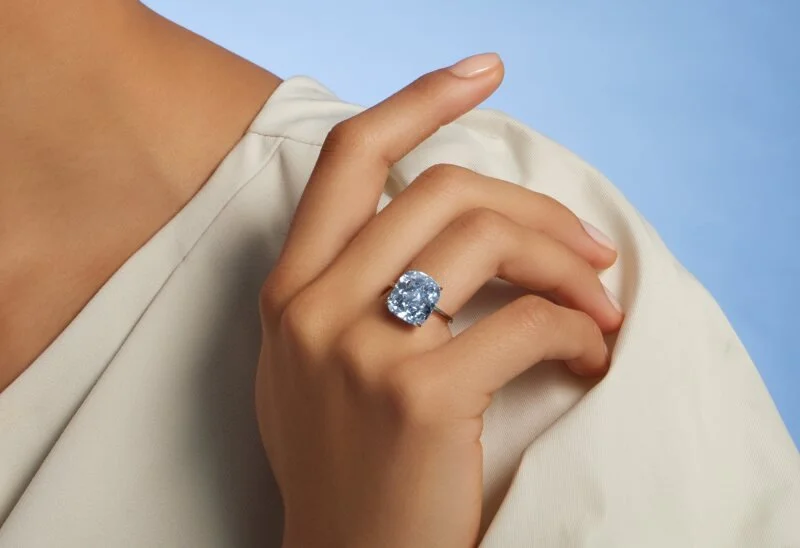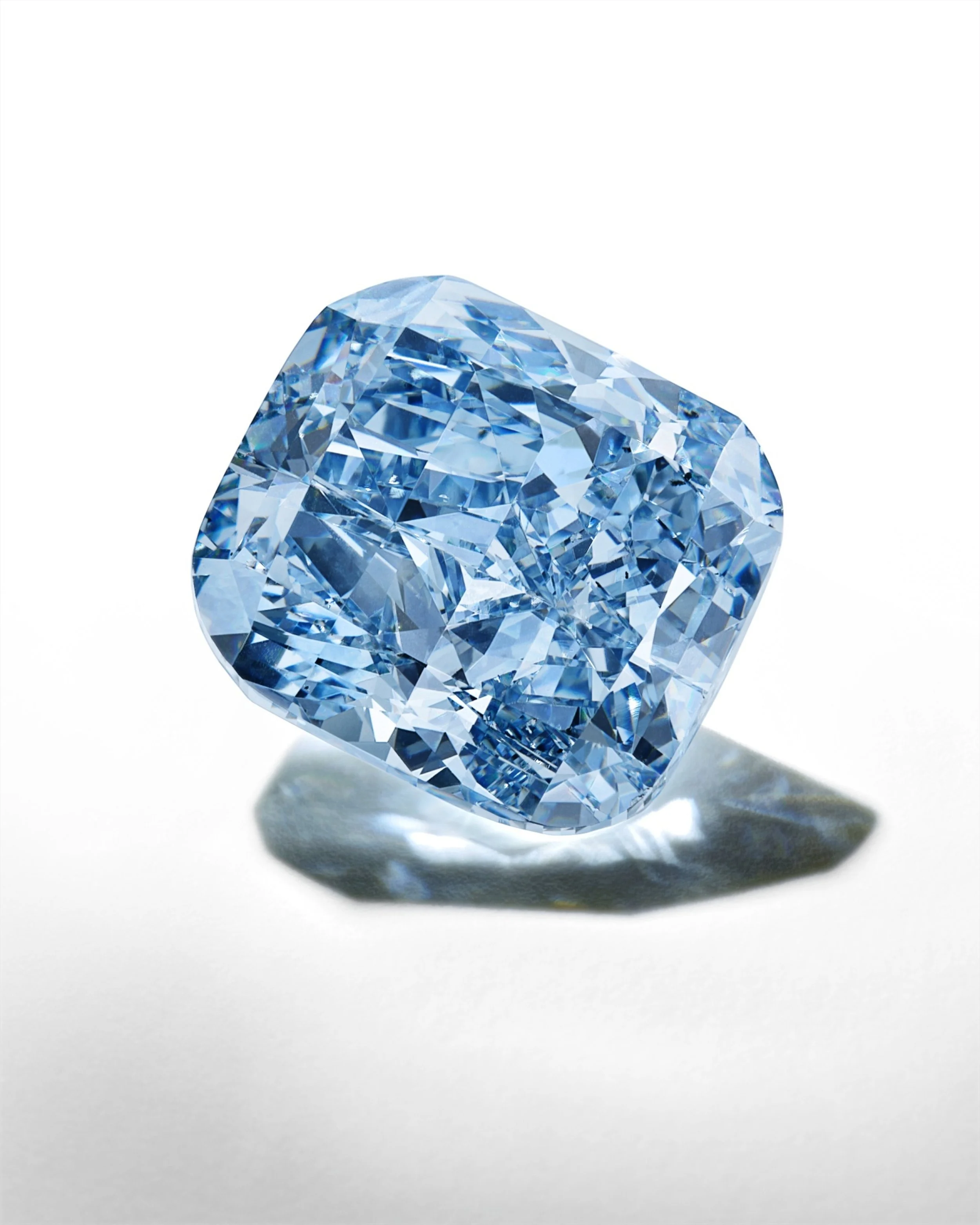The Mediterranean Blue Diamond
In May 2025, Sotheby’s Geneva presented one of the year’s most anticipated jewels: The Mediterranean Blue Diamond. At 10.03 carats, graded Fancy Vivid Blue by the Gemological Institute of America, it was among the rarest colored diamonds to reach the auction stage. After intense international bidding, the stone achieved $21.5 million, surpassing its pre-sale estimate and confirming its status as one of the most important blue diamonds in modern history.
The diamond’s journey began in South Africa, a region known for producing some of the finest blue diamonds ever discovered. Its coloration is the result of trace amounts of boron within the crystal lattice, a natural rarity that occurs in only a fraction of one percent of diamonds. From rough stone to polished gem, the process demanded precision. The cutter’s challenge was to retain significant carat weight while unlocking the depth of color. The final result — a cushion-modified brilliant of VS2 clarity — combined symmetry and brilliance without compromising saturation.
Blue diamonds of this size and quality are exceptionally rare. They account for less than 0.02% of all mined diamonds, and among them, only a handful exceed 10 carats with the vivid saturation that defines the “Fancy Vivid” category. This places the Mediterranean Blue in the same lineage as the Oppenheimer Blue (14.62 carats, sold for $57.5 million in 2016) and the Blue Moon of Josephine (12.03 carats, sold for $48.5 million in 2015). On a per-carat basis, the Mediterranean Blue achieved over $2.1 million per carat, reflecting both its rarity and its desirability among the world’s leading collectors.
Before its sale, Sotheby’s placed the diamond on an international tour, with exhibitions in Abu Dhabi and Hong Kong that drew wide attention. When it finally reached Geneva on 13 May 2025, collectors and dealers filled the room for a moment that blended market anticipation with cultural significance. The bidding was competitive, and while the identity of the buyer remains undisclosed, the result further reinforced Sotheby’s leadership in presenting world-class colored diamonds.
The sale of the Mediterranean Blue came at a time of broader shifts in the diamond market, with growing attention on synthetic alternatives and evolving consumer preferences. Yet as this auction demonstrated, the very rarest natural diamonds remain in a category of their own — commanding values that place them alongside works of art and historic collectibles.
With its exceptional grading, remarkable color, and $21.5 million result, the Mediterranean Blue Diamond now takes its place among the defining gems of the decade. It is a reminder that true rarity not only endures but continues to captivate collectors at the highest level.
For readers who wish to explore further details — including the full GIA certificate and technical specifications — Sotheby’s has published comprehensive documentation on their official auction page.





